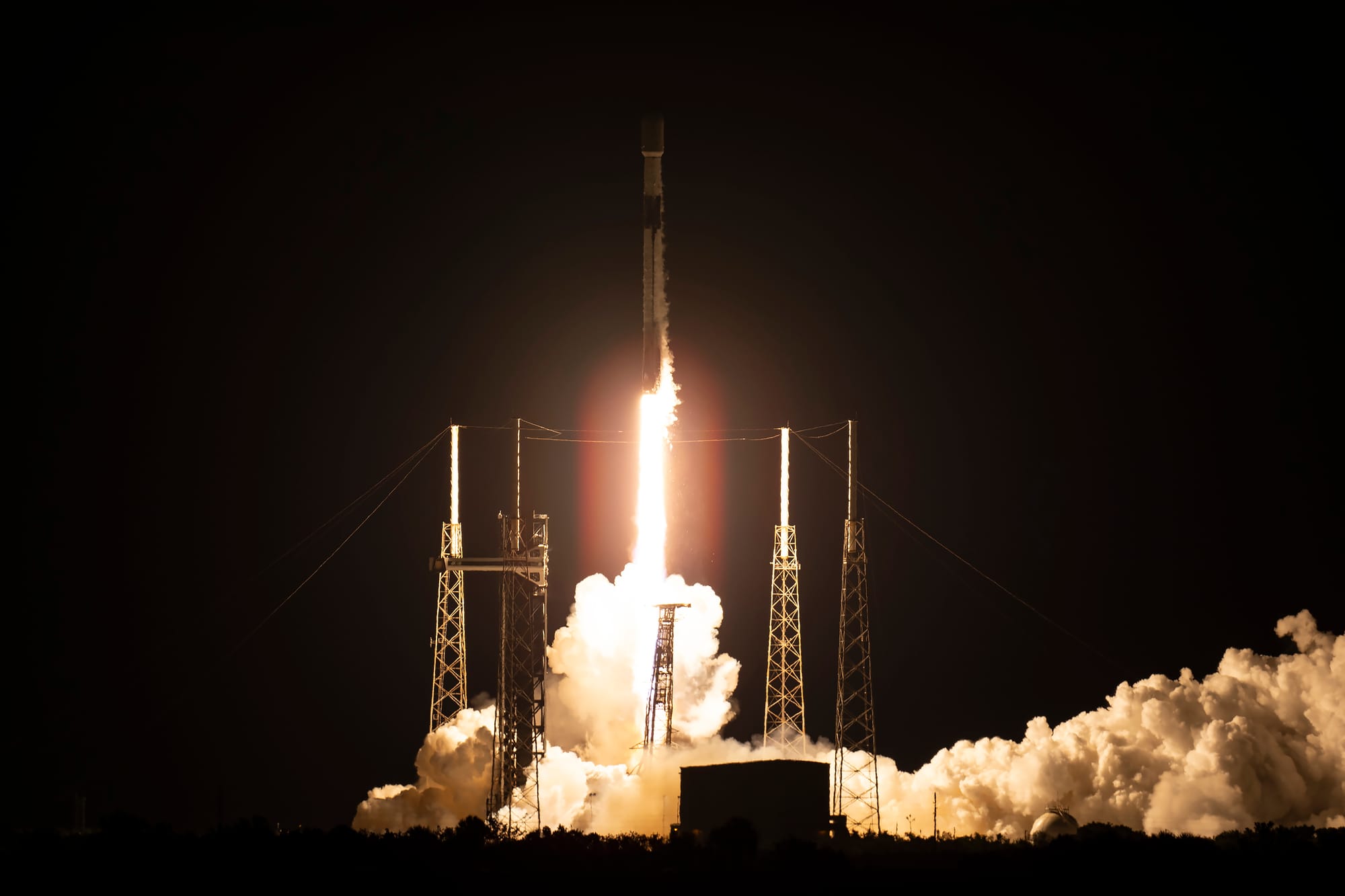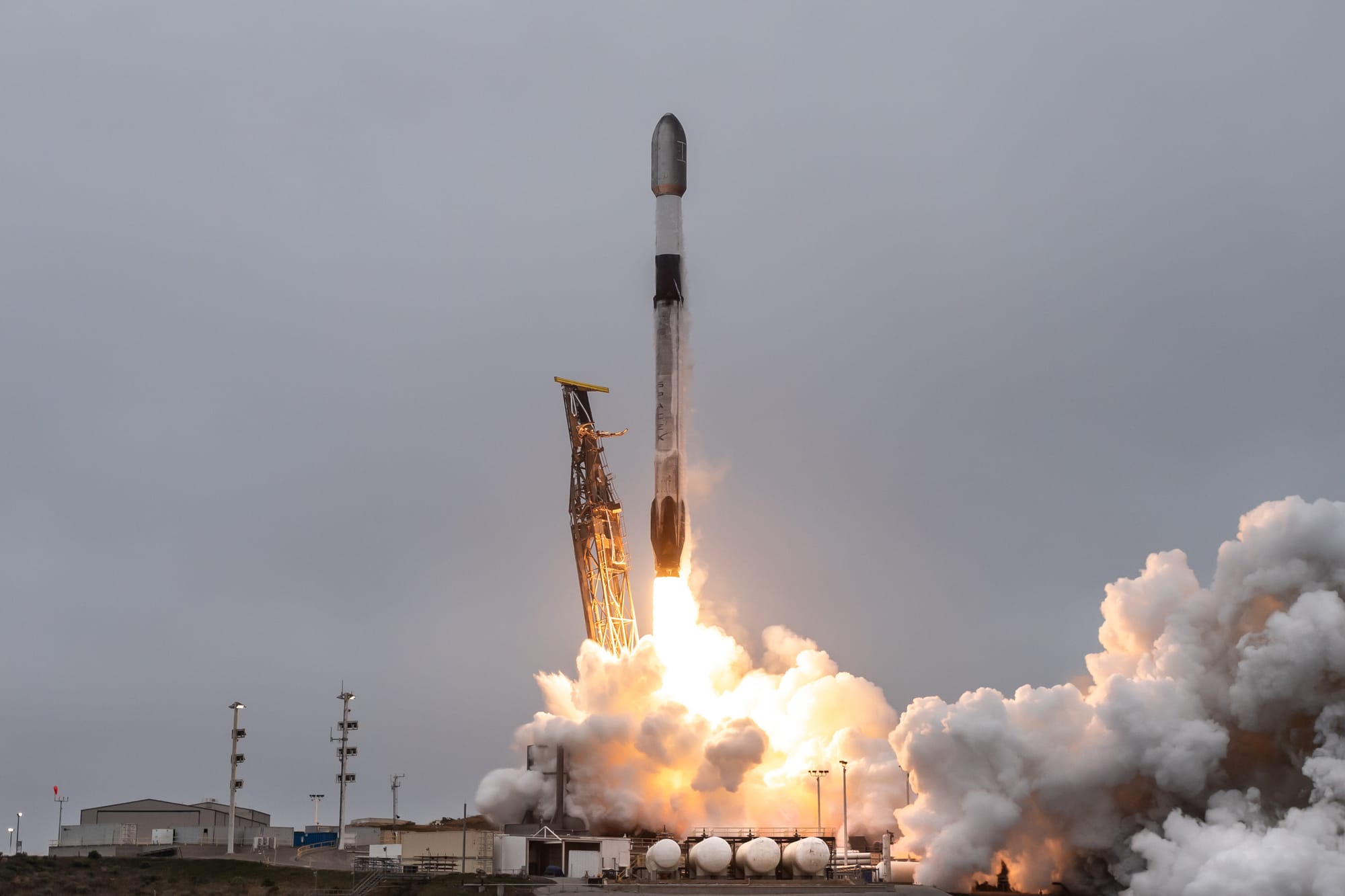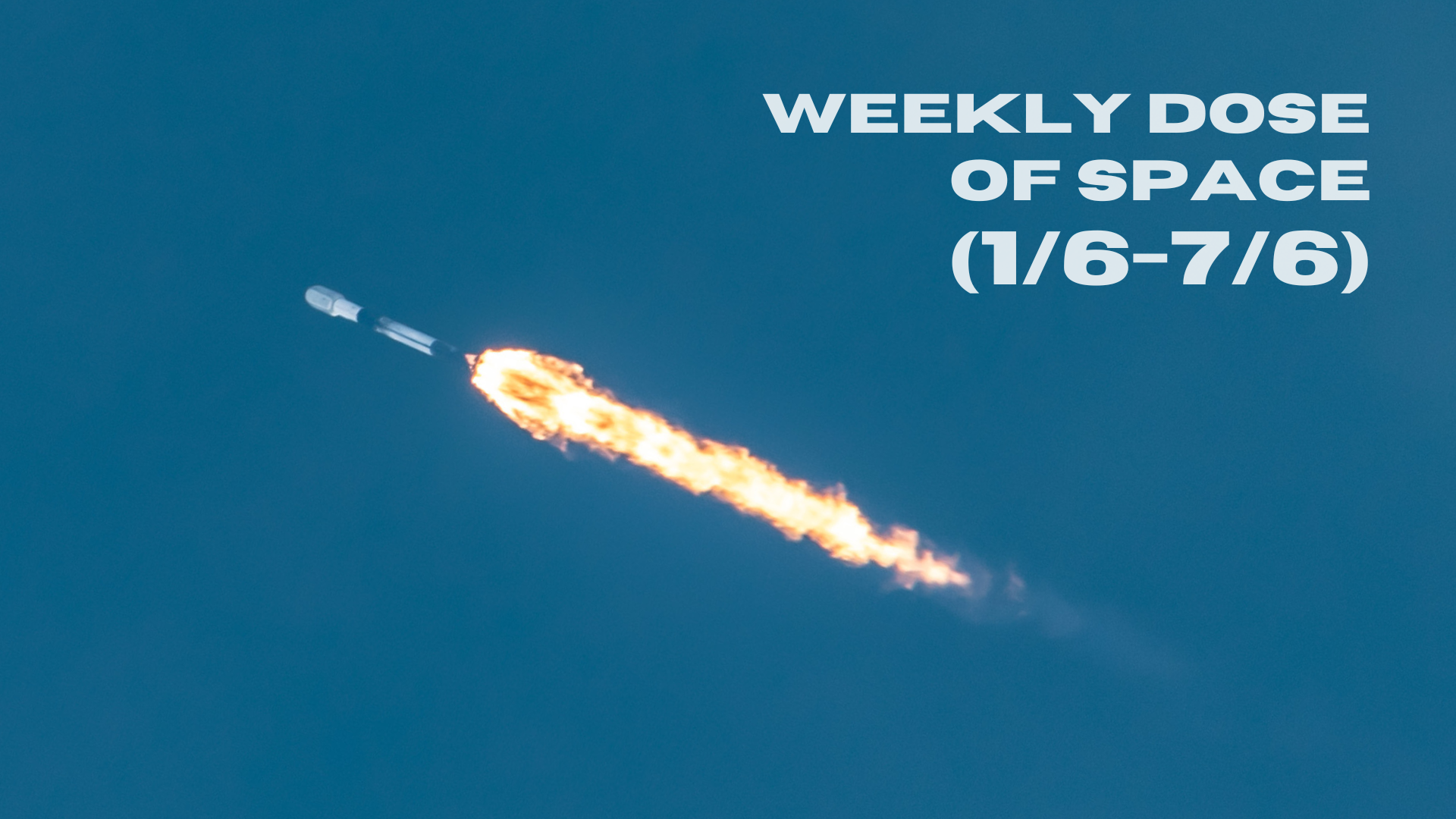Table of Contents
Welcome Back to Weekly Dose of Space! This week saw five launches worldwide, with at least one from both hemispheres. News from the week had the U.S. Senate moving to guarantee future Artemis missions and Impulse Space raising a few hundred million dollars. As always, we'll also look ahead to what the worldwide launch schedule might look like next week.
Launches This Week
June 3rd - Electron for 'Full Stream Ahead'
Rocket Lab launched its Electron rocket from Launch Complex 1B on the Māhia Peninsula, in New Zealand, carrying a single satellite to low Earth orbit for BlackSky Technology. BlackSky's satellite will provide images with a 50-centimeter resolution to customers.
LIFT-OFF for Electron's 65th mission! pic.twitter.com/ehP4y7QbeH
— Rocket Lab (@RocketLab) June 2, 2025
Electron lifting off for the 'Full Stream Ahead' mission, via Rocket Lab on Twitter.
June 3rd - Falcon 9 with Starlink Group 12-19
Twenty-three Starlink satellites were launched atop of a Falcon 9 to low Earth orbit out of Space Launch Complex 40, in Florida. In support of this mission was booster B1077, for its twenty-first flight with a landing on the drone ship 'Just Read The Instructions' downrange.
This was also the 500th launch for SpaceX's family of Falcon rockets, including Falcon 1, Falcon 9, and Falcon Heavy.

June 5th - Falcon 9 with Starlink Group 11-22
Twenty-seven Starlink satellites were sent to low Earth orbit atop of a Falcon 9 flying from Space Launch Complex 4E, in California. Booster B1063 supported this launch for its twenty-sixth flight, with a landing downrange on the drone ship 'Of Course I Still Love You'.

June 5th - Long March 6A with GuoWang Group 04
A Long March 6A launched from Launch Complex 9A at the Taiyuan Satellite Launch Center carrying five satellites into polar orbit for GuoWang's fourth satellite group. With this launch, the GuoWang mega-constellation has 34 satellites in orbit out of a possible 13,000, which will eventually provide worldwide internet services.

June 7th - Falcon 9 with SXM-10
SpaceX launched SiriusXM's SXM-10 satellite to geostationary transfer orbit with a Falcon 9 from Space Launch Complex 40. The SXM-10 satellite will be used to transmit SiriusXM's programming to its listeners' radios.
Deployment of SXM-10 confirmed pic.twitter.com/1eC1tUt3ub
— SpaceX (@SpaceX) June 7, 2025
The SXM-10 satellite being released from Falcon 9's second-stage, via SpaceX on Twitter.
In Other Space News
Senate looks to save SLS, Orion, Gateway
Senator Ted Cruz, Chairman of the Senate Commerce Committee, shared a proposal on June 5th to add 10 billion United States Dollars to NASA via a budget reconciliation bill to save key hardware critical to the Artemis program. This proposal was brought forward in response to major cuts from the Trump White House, which would retire major Artemis hardware after two more missions.
Cruz's proposal seeks to provide NASA with additional funding that would be available for the space agency to spend through to 2032, with the largest part of it, around 4.1 billion, going toward the Space Launch System (SLS) rocket and Orion spacecraft to perform the Artemis 4 and Artemis 5 missions. The proposal would allocate 2.6 billion for the Gateway lunar space station, ensuring it launches and heads out to the Moon.
Smaller funding amounts in the proposal will provide 1 billion for improvements and repairs to the Kennedy, Johnson, Marshall and Stennis space centers, along with the Michoud Assembly Facility, where the SLS rocket is made. Additionally, 700 million would be set aside for a Mars Telecommunications Orbiter, with 250 million for extra International Space Station funding from 2025 through to 2029.
Impulse Space raises 300 million in new funding
Impulse Space announced on June 3rd that it has completed its Series C funding round, raising 300 million United States Dollars to bring the company's total capital raised to 525 million. This latest funding round was led by Linse Capital with DFJ Growth, Valor Equity Partners, Founders Fund, Lux Capital, RTX Ventures, DCVC, Airbus Ventures, Spring Tide, First Principles Group, Balerion Space Ventures, Tamarack Global, and Trousdale Ventures participating.
The new funding is expected to allow for the scaling up of production for the companies' Mira and Helios orbital vehicles, greater research efforts to explore electric propulsion for long-duration missions, and an increased headcount to allow for the extra production and research. Speaking on the new funding round and the future, Tom Mueller, Chief Executive Officer at Impluse Space, stated:
"We’ve proven that we can build fast and fly successfully. Now, the market is demanding more," – "This raise helps us scale production and technical capabilities to meet that demand head-on." – "Achieving a true space age is going to require new levels of in-space mobility to move payloads quickly and precisely, both within and between orbits. That capability is what we’re building at Impulse."
With prior funding, Impulse Space has launched two Mira vehicles, performed what the company believes were the two largest orbital maneuvers ever by a nitrous-based propulsion system, secured dozens of government and commercial contracts, and has begun preparing its Helios vehicle for a debut mission in 2026 ahead of geostationary orbit rideshare missions in 2027.
What to Expect Next Week
June 8th - Falcon 9 with Starlink Group 15-8
Twenty-six Starlink satellites is planned to head to low Earth orbit by a Falcon 9 from Space Launch Complex 4E.
June 10th - Falcon 9 with Axiom-4
SpaceX is expecting to launch the Axiom-4 mission on a Crew Dragon spacecraft, carrying Peggy Whitson from the U.S., Shubhanshu Shukla from India, Sławosz Uznański from Poland, and Tibor Kapu from Hungary, to the International Space Station atop of a Falcon 9 from Launch Complex 39A.
June 10th - Falcon 9 with Starlink Group 12-24
Another group of Starlink satellites are planned to launch from Space Launch Complex 40 and head to low Earth orbit via a Falcon 9.
June 10th - Electron for 'The Mountain God Guards'
Rocket Lab is expecting to launch a synthetic aperture radar satellite to low Earth orbit, on behalf of iQPS, with its Electron rocket, from Launch Complex 1A on the Māhia Peninsula.
June 13th - Falcon 9 with Starlink Group 15-6
From Space Launch Complex 4E, more Starlink satellites are set to go to low Earth orbit atop of a Falcon 9.
June 13th - Long March 2D with a to-be-announced payload
A Long March 2D may launch from the Jiuquan Satellite Launch Center carrying a currently unannounced payload.
June 13th - Falcon 9 with Starlink Group 12-26
Even more Starlink satellites are planned to be delivered to low Earth orbit by a Falcon 9 flying from Space Launch Complex 40.
June 13th - Atlas V with KA-02
United Launch Alliance is preparing to launch Amazon's second group of twenty-seven Kuiper satellites to low Earth orbit to build the space-based internet mega-constellation.







